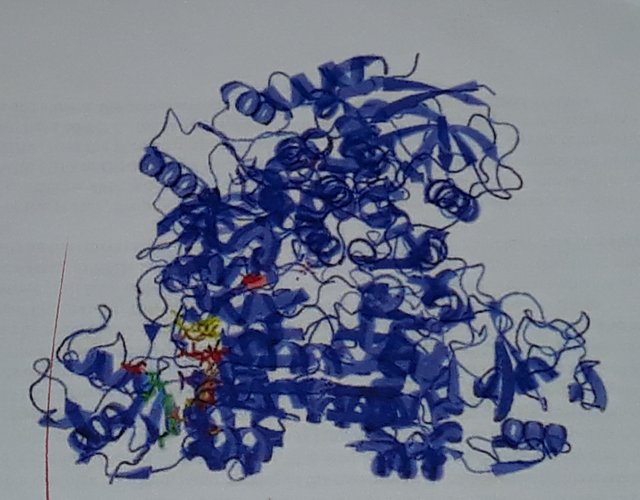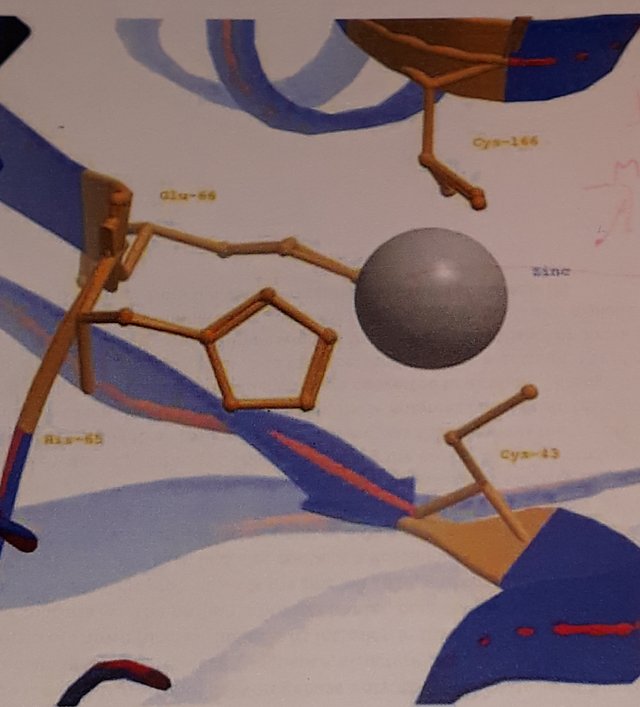Alcohol Dehydrogenase TM0436, Part 3

Figure 1. Overall structure of TM0436 rendered in Pymol. The protein has 4 identical chains, making it a homotetramer. Binding sites for zinc and cofactors lie close together, forming a distinct deft. Highlighted are amino acid residues which coordinate ligand binding on the active site of one chain. Red indicates NADH, Yellow shows NADPH and orange signifies both molecules. The green residues are catalytic zinc coordinators, while the purple indicate structural zinc.
Sequence alignment and homology modeling experiments have revealed a variety of features that suggest TM0436 is an alcohol dehydrogenase (6). Both incorporate a Rossmann fold, for the coordination and binding of NAD(H). Both utilize both structural and catalytic zinc atoms. The active site zinc coordinates the binding of the substrate (alcohol), while the structural zinc is necessary for protein stability. The structural zinc site is highly conserved, consisting of four closely spaced cysteine ligands positioned symmetrically around the atom (5). Removal of the structural zinc ions from the TDH of Pyrococcushorikoshii, another hyperthermophile, decreases the thermostability of the enzyme, suggesting that the coordination geometry of the zinc ions at this position contributes to the thermostability of the protein (3).
Several plausible molecules have been suggested as substrates for TM0436, including short-chain alcohols from methanol to hexanol. Some evidence suggests that the enzyme is directly or indirectly involved in the process of pectin degradation (7). Methanol is produced by pectin degradation, which T. maritima species are known to do (2). Another possibility is that the protein may participate in glycine oxidation through the breakdown of threonine, an amino acid which contains a methanol group (2).

Figure 2. TM0436 active site rendered in Molsoft. The active site zinc is highlighted, with coordinating amino acid residues surrounding the metal. These residues (cysteine, glutamic acid, and histidine) are highly conserved among alcohol dehydrogenases.
To listen to the audio version of this article click on the play image.

Brought to you by @tts. If you find it useful please consider upvoting this reply.
Very informative and useful article
very inportant and usefull article at present time..thanks sir for share your inportant concept..
Your article is very good, my game is very fun. https://goo.gl/Dd9394